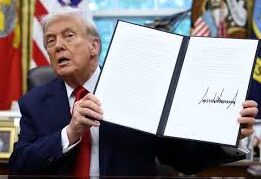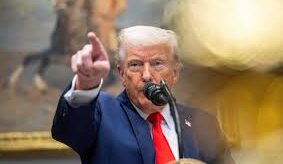Russia’s Vladimir Putin, China’s Xi Jinping and India’s Narendra Modi met on Monday in Tianjin for a rare show of unity. The Shanghai Cooperation Organization (SCO) summit gave Putin the chance to sit down with his two biggest oil customers and to push back against U.S. pressure.
India and China began buying more Russian crude after Western nations cut ties with Moscow over its 2022 invasion of Ukraine. Discounts made Russian oil too attractive to ignore, but the partnership has grown beyond economics. All three now share a common rival: the United States, which has hit Russia with sanctions and slapped tariffs on both India and China.
India has faced some of the highest U.S. duties for importing Russian oil. China is still in talks with Washington to avoid heavier tariffs and possible sanctions of its own.
A lifeline for Moscow
For Russia, India and China have become critical. Together, they make up the bulk of its energy exports, cushioning the blow of losing Western markets.
China imported over 100 million tonnes of Russian crude last year nearly 20% of its energy supply. India, which barely bought Russian oil before the war, has now imported around $140 billion worth since 2022.
Oil and gas provide about a quarter of Russia’s budget, helping fund its war in Ukraine. Analysts say Moscow may offer even deeper discounts to keep India and China buying, especially as Washington tries to turn New Delhi away.
“India offered Russia a lifeline when Western sanctions shut it out,” said Mandar Oak, a public policy professor at the University of Adelaide. “It wouldn’t be surprising if Russia cuts prices further to hold onto India.”
Prime Minister Modi signaled no intention of backing off. On Monday, he told Putin that their countries had “walked together shoulder to shoulder.” Indian officials have been blunt: the country will buy energy from whoever gives it “the best deal.”
Relations with Washington have suffered. During the Trump administration, the U.S. slapped an extra 25% tariff on India as punishment for its Russian imports a move New Delhi called “unjustified.”
Political points for Modi
At home, standing firm on Russian oil boosts Modi’s political image, said Prof Oak. It shows India won’t bend to U.S. pressure, while also securing cheaper fuel for its economy.
India once relied heavily on the Middle East for crude. But since 2022, Russian oil has consistently undercut Middle Eastern prices, giving Indian refiners a cost advantage.
China, meanwhile, is eager to protect its energy supply. On Tuesday, Russian and Chinese energy firms announced plans to expand gas deliveries. But experts note Putin may not offer China the same discounts if India keeps buying big.
China’s bigger stage
For China, the summit is also about geopolitics. By hosting leaders from countries hit by U.S. tariffs including Pakistan, Myanmar and Sri Lanka Beijing is showcasing itself as the center of an alternative order.
“China has long pushed for a ‘multi-polar’ world, where power isn’t concentrated in the hands of the U.S.,” said trade policy expert Peter Draper.
Despite historical tensions, Russia, India and China now find themselves pulled together by shared economic needs and a common adversary.
As Prof Oak put it, “In the face of U.S. tariffs, they have strong reasons to join hands.”





